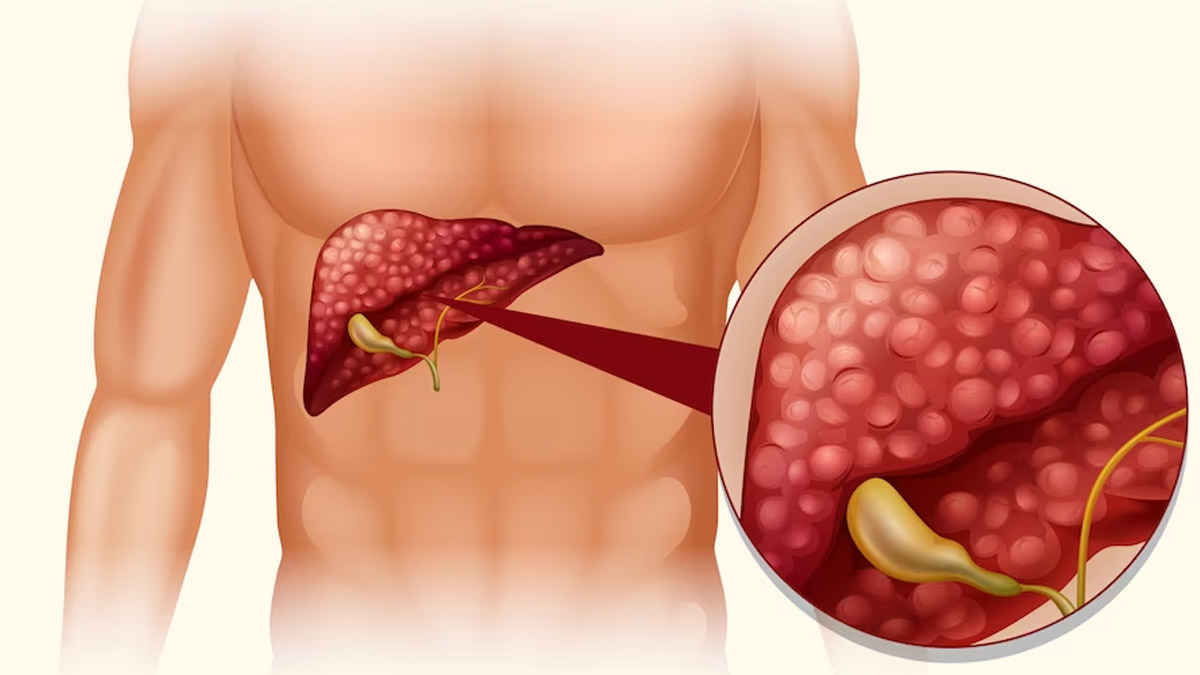
Liver cirrhosis is a chronic and progressive disease marked by scarring and fibrosis of the liver tissue. It is frequently the final stage of several liver disorders and is linked with severe liver function decline. Cirrhosis alters the normal structure of the liver, causing it to harden and become nodular, resulting in a variety of issues.
Table of Content:-
Causes Of Liver Cirrhosis
Liver cirrhosis can be caused by several factors, including:
- Chronic alcohol abuse Long-term excessive alcohol consumption is one of the leading causes of cirrhosis.
- Chronic hepatitis B or C infections can cause inflammation and liver damage, eventually leading to cirrhosis.
- Non-alcoholic fatty liver disease (NAFLD): Accumulation of fat in the liver, often associated with obesity, insulin resistance, and metabolic syndrome, can progress to cirrhosis.
- When the immune system mistakenly attacks and damages liver cells, leading to cirrhosis.

Symptoms
In the early stages, liver cirrhosis may not cause noticeable symptoms. According to Dr. Reema Kashiv, Senior Physician from Noble Hospital in Pune, as the disease progresses, the following signs and symptoms may develop:
- Fatigue and weakness
- Loss of appetite and weight loss
- Nausea and vomiting
- Abdominal pain and swelling
- Jaundice (yellowing of the skin and eyes)
- Itchy skin
- Easy bruising and bleeding
- Spider veins on the skin
As time passes, symptoms intensify, leading to:
- Leg edema or swelling
- Ascites, often known as abdominal swelling
- Confusion or a thinking problem
- Gynecomastia
- Impotence
- Complications
Complication
The scarring of liver tissue increases pressure in the portal vein, which carries blood from the intestines to the liver. This can result in the development of enlarged veins (varices) in the oesophagus and stomach, which are prone to bleeding.
Fluid accumulation in the abdominal cavity due to increased pressure in the blood vessels.
Build-up of toxins in the bloodstream due to impaired liver function, leading to cognitive changes, confusion, and in severe cases, coma.
The compromised immune function of the liver makes individuals with cirrhosis more susceptible to infections, particularly bacterial peritonitis and pneumonia.
Diagnosis and Treatment
To diagnose liver cirrhosis, a combination of medical history, physical examination, blood tests, imaging studies (such as ultrasound, CT scan, or MRI), and sometimes a liver biopsy may be necessary.

The treatment of liver cirrhosis focuses on managing the underlying cause, preventing further liver damage, and addressing complications. Depending on the specific situation, treatment options may include:
- Ceasing alcohol consumption
- Losing weight
- Adopting a healthy diet
Depending on the cause, medications may be prescribed to manage underlying liver diseases, control symptoms, and reduce complications.
Medications can help control fluid retention, prevent bleeding from varices, and manage hepatic encephalopathy. Liver transplantation is preferred in advanced cases where the liver function is severely impaired.
Also watch this video
How we keep this article up to date:
We work with experts and keep a close eye on the latest in health and wellness. Whenever there is a new research or helpful information, we update our articles with accurate and useful advice.
Current Version